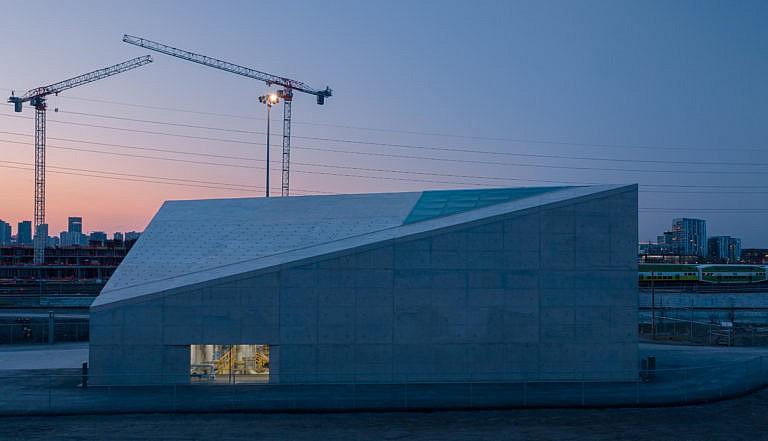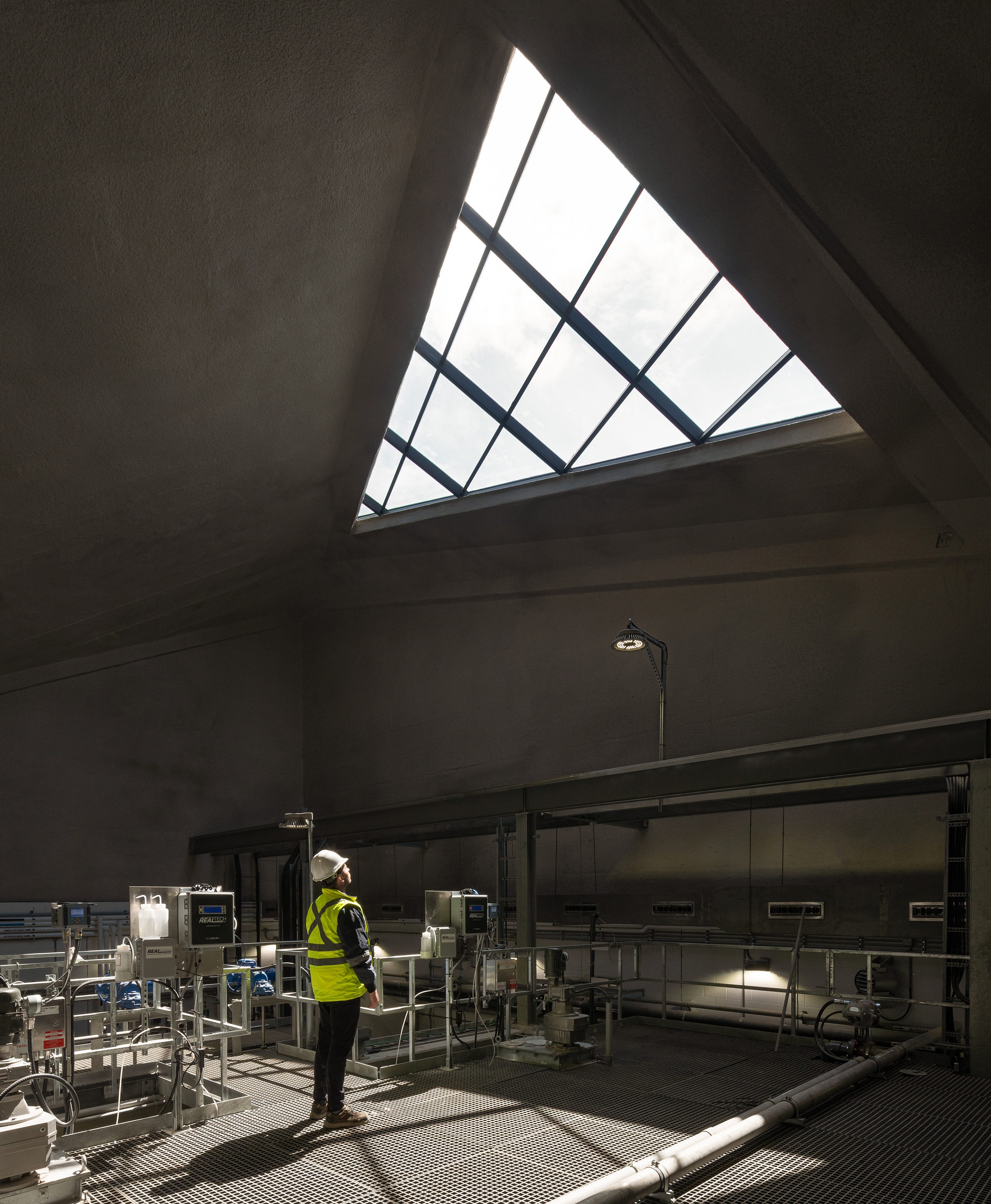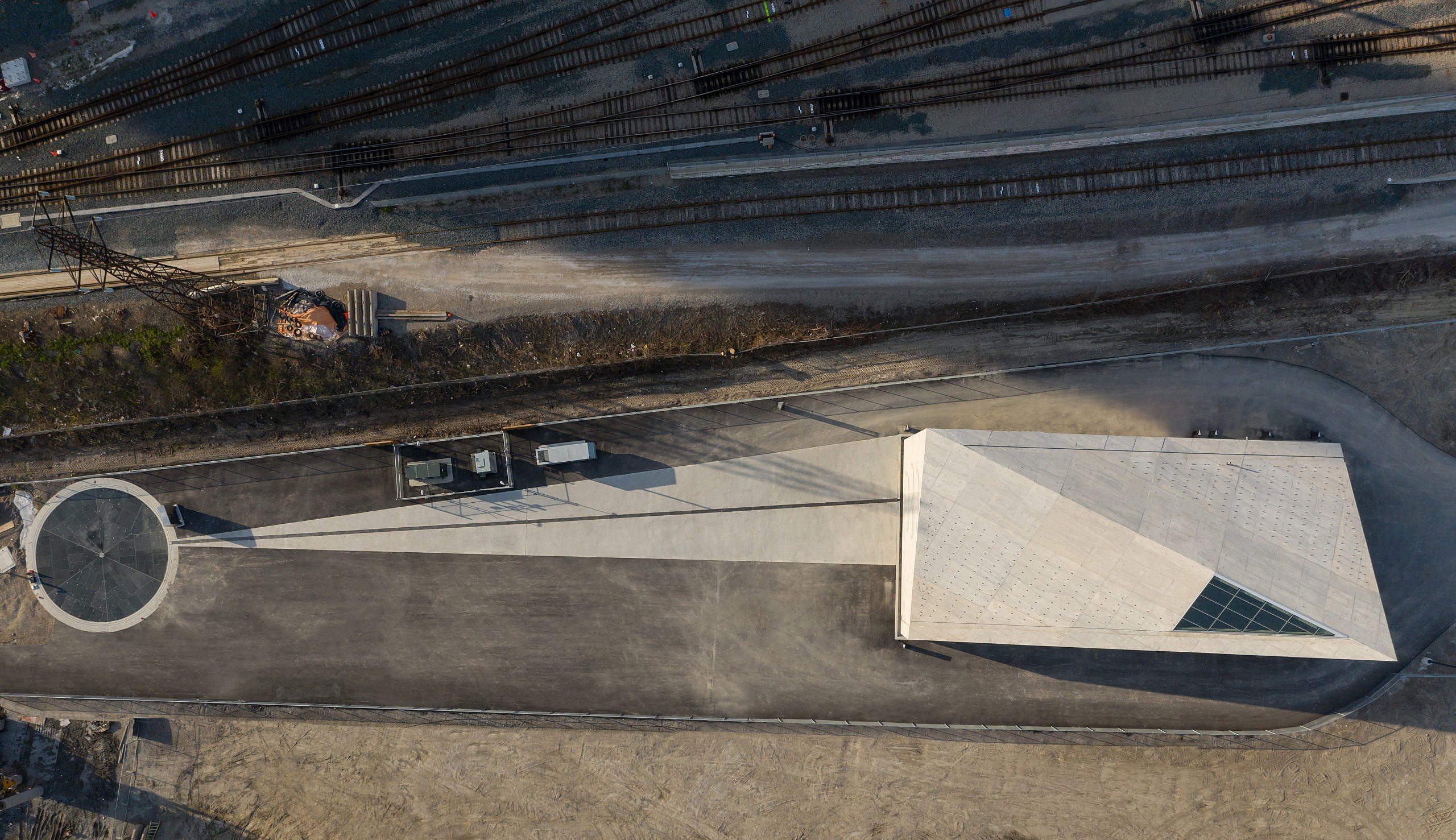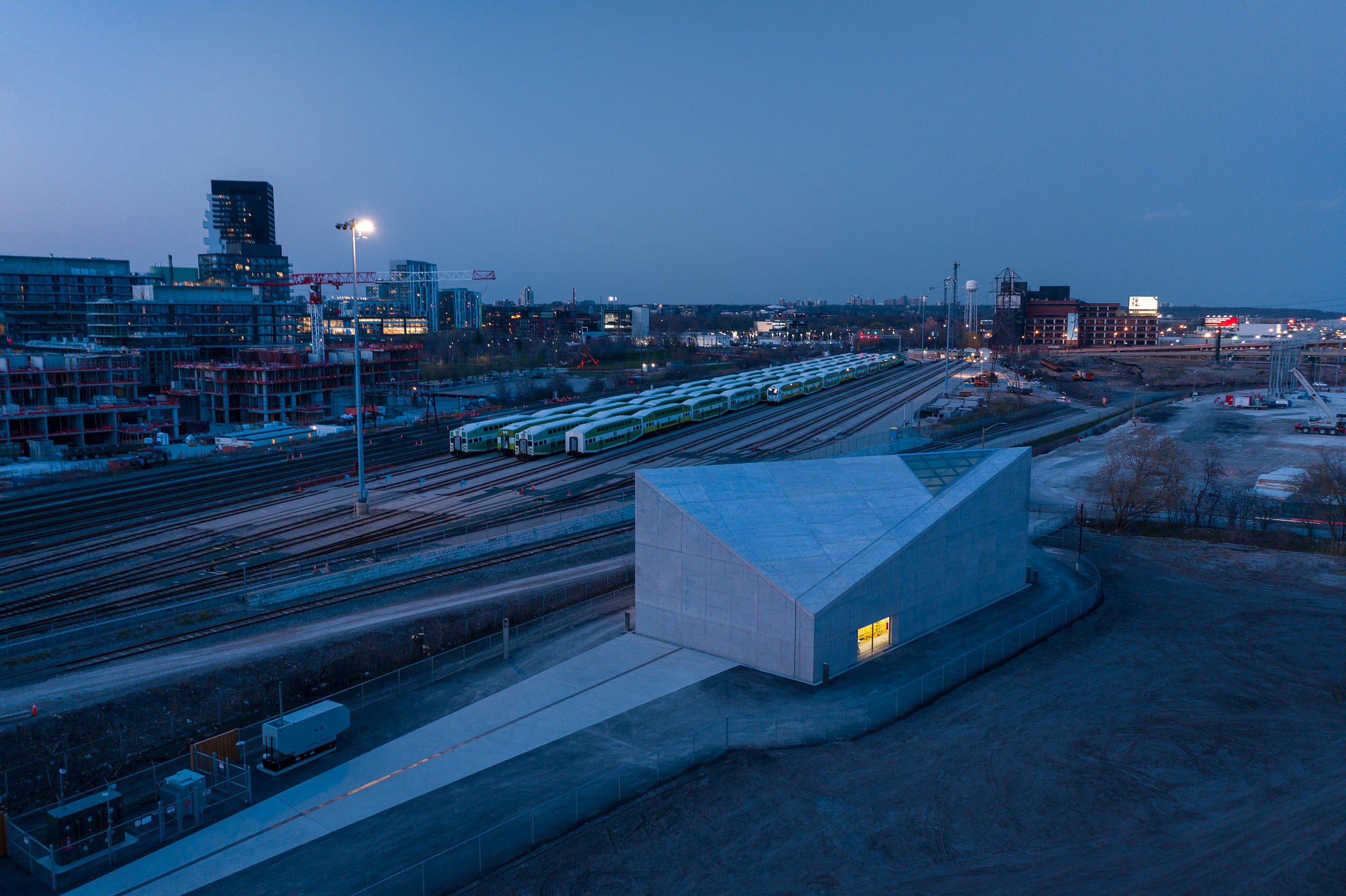The Building: Inside Toronto’s beautiful, hyper-modern stormwater processing plant
This is where clean lines and filthy water collide

Share

Every time it rains, excess water rushes through the streets of Toronto’s downtown eastern core and pours into the city’s sewer system. Its endpoint: the Cherry Street Stormwater Management Facility, where all manner of detritus—backpacks, cigarettes and, occasionally, a sneaker or two—is filtered out of the water at 385 gallons per second before the torrent rushes down into Lake Ontario.
The futuristic $23-million structure sits at the southernmost edge of Toronto’s Canary District, a formerly industrial area that, in recent years, has experienced a surge in modern developments as part of the city’s lakeshore revitalization program. Waterfront Toronto commissioned the stormwater facility for practical purposes, like removing pollutants and preventing flooding. On the aesthetic side, local architecture firm gh3* envisioned a chic inverted well. The result is an attention-grabbing, slate-grey prism with a stern diagonal ridge.
READ: The Building: A Calgary parkade redesigned with the future in mind

Much like the R.C. Harris Water Treatment Plant, its art deco counterpart to the east, the Cherry Street site proves that utilitarian city structures need not be pedestrian in their presentation. The plant’s exterior walls and roof are composed of concrete, which allows the building to blend seamlessly into its surroundings. (Those include a hydro corridor, a GO Transit heavy-rail yard and the Gardiner Expressway.) A dearth of windows adds to its mysterious feel, though daylight floods in through a single triangular skylight overhead.

As for how it works: the stormwater undergoes multiple treatment processes, which remove debris and oil and disinfect the water with UV light before discharging it into the lake. But a quarter of the water meets an eye-catching end at nearby Sherbourne Commons: it’s funnelled through Jill Anholt’s Light Showers, a series of public art sculptures resembling giant metal diving boards. As extreme weather events, like flash floods, become more common in urban environments, the Cherry Street facility will play a crucial role in keeping Torontonians safe. And, for a city that’s not exactly known for its architectural prowess, Cherry Street is inspiring a renewed sense of artistry. In 2022, the building was awarded a Governor General’s Medal in Architecture. To the jury, it was a pop of beauty in unexpected conditions. Rain or shine, but, in this case, mostly rain.

